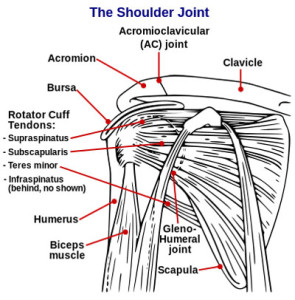 Thoracic Outlet Syndrome (TOS) is a medical term used to describe the compression of nerves and blood vessels in the narrow upper-body passage known as the thoracic outlet. This is a small area that’s located between the collarbone and first rib. If it becomes squeezed, either by nearby muscles or even bones, an individual may experience dull, aching pains in the neck, arm and back, and often numbness & tingling down to the fingers.
Thoracic Outlet Syndrome (TOS) is a medical term used to describe the compression of nerves and blood vessels in the narrow upper-body passage known as the thoracic outlet. This is a small area that’s located between the collarbone and first rib. If it becomes squeezed, either by nearby muscles or even bones, an individual may experience dull, aching pains in the neck, arm and back, and often numbness & tingling down to the fingers.
What Causes TOS?
TOS can develop for a number of different reasons. Most common causes of TOS include:
- Direct injury to shoulders or neck (i.e. whiplash)
- Repetitive arm and shoulder movements and activities (including sports or work related)
- Presence of an extra rib (decreased space causes bony pressure on the vessels and nerves).
- Obesity or during pregnancy (excess tissue and/or fluid retention can irritate tissues further).
- Poor posture
While you may have little control over the first 4 factors, You can certainly proactively impact poor posture. If you frequently slouch in your chair or don’t hold your body upright when you walk, there’s a chance you could develop TOS. Develop the habit of keeping good posture throughout the day, whether you are sitting, standing or walking. When your skeleton supports your posture properly, muscles nerves and blood vessels can function much more efficiently.
Treating TSI
Some professional massage therapists and physical therapists have specialized training in treating TOS and the associated pain it causes. If you believe you are suffering from TOS, many options are available to help you heal.
Since no two cases are completely identical, treatment will vary from person to person. Your massage therapist can conduct a comprehensive analysis including postural assessment to identify which muscles and other structures are involved with this nerve compression. With this information, he or she can use targeted massage techniques to help address the causes of the this imbalance, which can alleviate your symptoms for the long term.
Talk with your massage therapist to see what strategies they recommend for your TOS condition. You may be surprised to find how much relief you can get.
Contact us today for more information!
